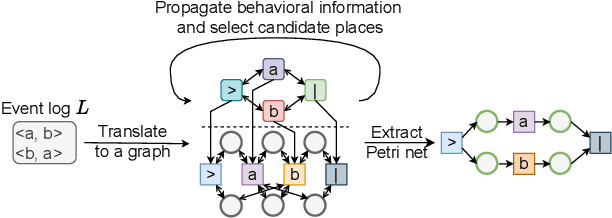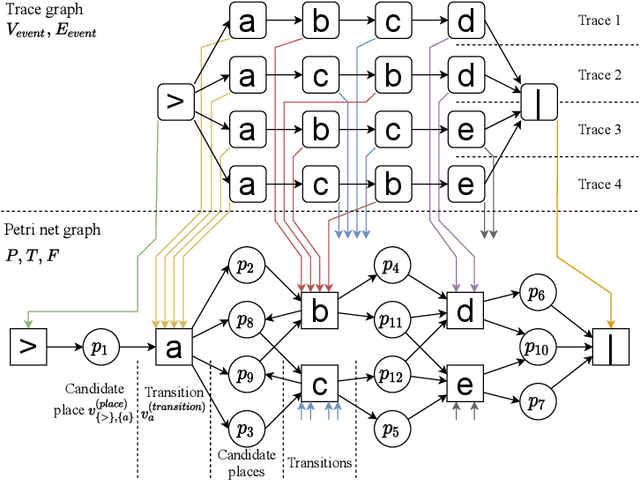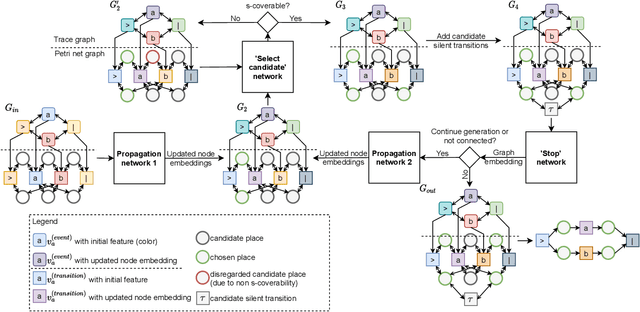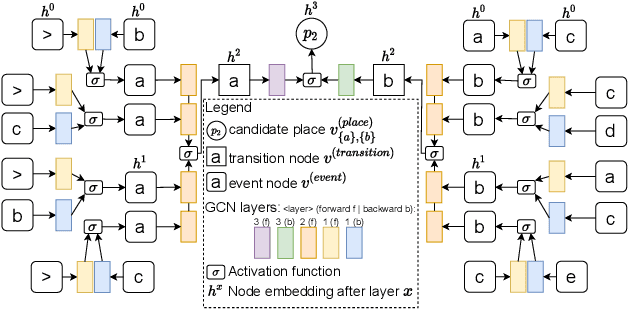Dominique Sommers
In System Alignments we Trust! Explainable Alignments via Projections
Jan 24, 2025



Abstract:Alignments are a well-known process mining technique for reconciling system logs and normative process models. Evidence of certain behaviors in a real system may only be present in one representation - either a log or a model - but not in the other. Since for processes in which multiple entities, like objects and resources, are involved in the activities, their interactions affect the behavior and are therefore essential to take into account in the alignments. Additionally, both logged and modeled representations of reality may be imprecise and only partially represent some of these entities, but not all. In this paper, we introduce the concept of "relaxations" through projections for alignments to deal with partially correct models and logs. Relaxed alignments help to distinguish between trustworthy and untrustworthy content of the two representations (the log and the model) to achieve a better understanding of the underlying process and expose quality issues.
Process Discovery Using Graph Neural Networks
Sep 13, 2021



Abstract:Automatically discovering a process model from an event log is the prime problem in process mining. This task is so far approached as an unsupervised learning problem through graph synthesis algorithms. Algorithmic design decisions and heuristics allow for efficiently finding models in a reduced search space. However, design decisions and heuristics are derived from assumptions about how a given behavioral description - an event log - translates into a process model and were not learned from actual models which introduce biases in the solutions. In this paper, we explore the problem of supervised learning of a process discovery technique D. We introduce a technique for training an ML-based model D using graph convolutional neural networks; D translates a given input event log into a sound Petri net. We show that training D on synthetically generated pairs of input logs and output models allows D to translate previously unseen synthetic and several real-life event logs into sound, arbitrarily structured models of comparable accuracy and simplicity as existing state of the art techniques for discovering imperative process models. We analyze the limitations of the proposed technique and outline alleys for future work.
 Add to Chrome
Add to Chrome Add to Firefox
Add to Firefox Add to Edge
Add to Edge